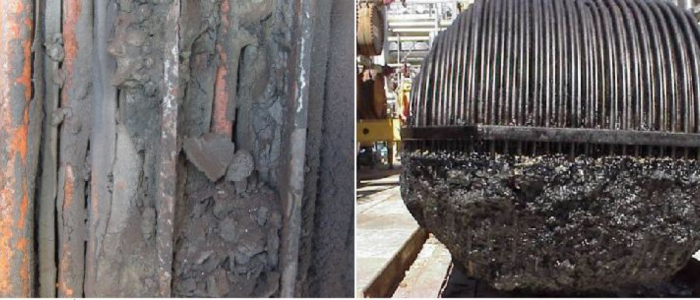Introduction
Fouling in heat exchangers refers to the accumulation of unwanted deposits on heat transfer surfaces during heating and cooling operations. This issue is prevalent across industries and significantly impacts the performance of heat exchange equipment. The buildup of fouling acts as an insulating layer, reducing heat transfer efficiency, increasing energy consumption, and causing pressure drops. Addressing fouling effectively requires a deep understanding of its types, causes, detection methods, and prevention strategies.
Types of Fouling in Heat Exchangers
Fouling manifests in various forms, each with distinct causes and effects. Below are the primary types of fouling observed in industrial heat exchangers:
- Particulate Fouling: Solid particles, sediments, or contaminants present in fluids settle on heat exchanger surfaces, reducing heat transfer efficiency and increasing pressure drop.
- Scaling: When minerals like calcium carbonate precipitate due to temperature changes, they form solid layers on heat transfer surfaces, impairing performance.
- Corrosion Fouling: Corrosion byproducts, such as rust and oxides, accumulate on metal surfaces, leading to localized damage and reduced efficiency.
- Biological Fouling (Biofouling): Microorganisms like bacteria, algae, and fungi grow on heat exchanger surfaces, forming biofilms that act as insulating barriers, reducing heat transfer and causing equipment degradation.
- Chemical Reaction Fouling: Certain fluids react chemically with the heat exchanger surfaces, forming deposits that hinder heat transfer.
- Crystallization Fouling: Solutes precipitate out of solution and form crystalline deposits on surfaces, particularly in high-temperature applications.
- Polymerization Fouling: Organic compounds transform into polymers under heat exposure, adhering to surfaces and causing blockages, common in hydrocarbon-processing industries.
Causes of Fouling in Heat Exchangers
Understanding the root causes of fouling is crucial for implementing effective mitigation strategies. Below are the key factors contributing to fouling:
- Impurities in Fluids: Suspended solids, dust, and sediments settle on surfaces over time.
- Mineral Deposition: Changes in fluid temperature or concentration lead to scaling.
- Corrosion: Chemical reactions between fluid and metal surfaces create deposits.
- Biological Growth: The presence of nutrients and warm temperatures promote biofilm formation.
- Temperature Fluctuations: Sudden temperature changes accelerate the precipitation of dissolved solids
- Flow Disruptions: Uneven fluid flow creates stagnant zones, increasing deposit accumulation.
- Material Incompatibility: Inadequate material selection leads to chemical reactions that cause fouling.
- Operating Outside Design Limits: High temperatures, excessive flow rates, or low velocities increase fouling potential.
Key Factors Influencing Fouling
Fouling severity and rate depend on several critical factors, including:
- Fluid Composition: Higher concentrations of minerals, organic matter, or contaminants increase fouling risk.
- Temperature: Elevated temperatures accelerate chemical reactions and scaling.
- Flow Velocity: Low fluid velocities encourage particle deposition, while high turbulence minimizes fouling.
- pH Levels and Chemical Properties: Imbalanced pH can lead to scaling or corrosive fouling.
- Surface Roughness: Rough surfaces provide more sites for particle adherence.
- Turbulence and Pressure Variations: Poor flow distribution and sudden pressure changes contribute to fouling.
- Presence of Microorganisms: Bacterial activity fosters biofilm growth.
How to Detect Fouling in Heat Exchangers
Early fouling detection is critical for maintaining system efficiency. Common detection methods include:
- Temperature Differential Monitoring: A decreasing temperature difference between inlet and outlet fluids signals heat transfer inefficiencies.
- Pressure Drop Analysis: A rising pressure drop across the exchanger suggests increasing deposits.
- Flow Rate Reduction: A lower-than-expected flow rate indicates obstructions from fouling.
- Thermal Imaging: Identifies uneven heat distribution on exchanger surfaces.
- Ultrasonic Thickness Measurement: Detects changes in tube wall thickness due to buildup.
- Vibration Analysis: Excessive vibration patterns can signal fluid flow obstructions.
- Chemical Analysis of Fluids: Examining fluid composition helps identify fouling contaminants.
- Periodic Inspections and Cleaning: Regular maintenance helps detect fouling before it becomes severe.
Prevention and Mitigation Strategies
Preventing fouling is essential to maintaining optimal performance and minimizing maintenance costs. Here are some effective strategies:
- Proper Heat Exchanger Design: Utilize designs that promote uniform flow distribution and reduce stagnant zones.
- Fluid Treatment: Implement filtration, chemical dosing, and water softening to minimize contaminants.
- Use of Anti-Fouling Coatings: Specialized coatings on heat exchanger surfaces can reduce adhesion of deposits.
- Routine Cleaning and Maintenance: Scheduled cleanings prevent buildup before it affects efficiency.
- Optimized Operating Conditions: Maintain appropriate temperature, pressure, and velocity ranges.
- Use of Biocides and Chemical Inhibitors: Prevent microbial growth and scale formation.
- Monitoring and Predictive Maintenance: Use real-time sensors and AI-based systems to predict fouling and take proactive measures.

